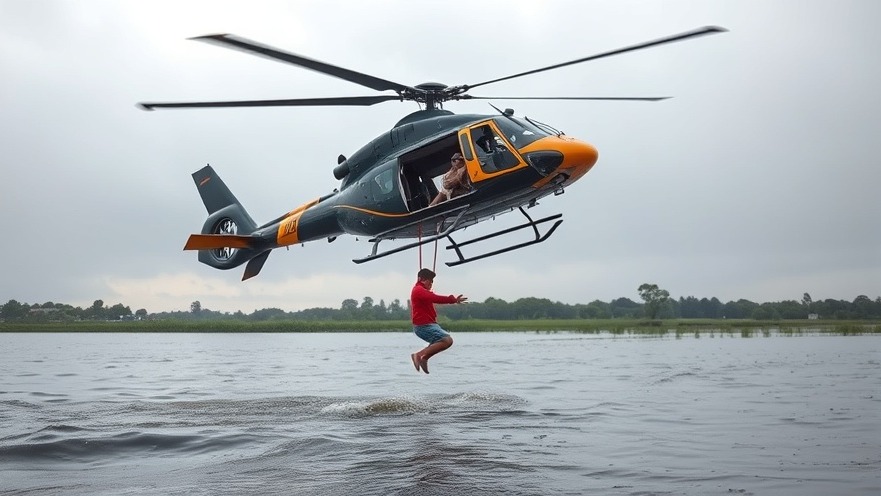
Flash Floods Devastate Hill Country, Leaving Community in Shock
In a tragic turn of events, Hill Country, Texas, has been ravaged by sudden flash floods that have claimed at least 24 lives, including adults and children. The deluge transformed the serene Guadalupe River into a raging torrent, with reports of over 10 inches of rain in just a few hours. This extreme weather event has not only disrupted lives but also severed a close-knit community, leaving many families searching for missing relatives, notably at the Christian camp where 23 girls are still unaccounted for.
Current Rescue Efforts and Search Operations
Rescue operations are currently underway, spearheaded by a concerted effort from local authorities and state agencies. Lt. Gov. Dan Patrick has stated that officials are deploying 14 helicopters and dozens of drones in hopes of locating survivors amidst the wreckage. Authorities have reported that between six to ten bodies were recovered during initial rescue efforts, but an ongoing investigation aims to confirm if any of the deceased were part of the missing campers.
“We will do anything humanly possible to find your daughter,” Patrick reassured families during a press conference. The search operations have seen impressive mobilization, with around 500 teams on the ground working tirelessly through difficult conditions to locate those still missing.
The Human Cost of Natural Disasters
As floodwaters swept through Kerr County late Friday, the community faced a devastating humanitarian crisis. The emotional toll is incalculable—families are waiting anxiously for news of their loved ones, as the notion of losing their children in such a harrowing scenario gnaws at their hopes. In a situation where the rescue teams balance searching for survivors with the grim task of recovering bodies, the duality represents a stark reminder of the fragility of human life against nature’s fury.
The Complex Dynamics of Texas Weather Patterns
This incident underscores the increasing unpredictability of weather patterns in Texas, a state already familiar with fluctuations between drought and extreme rainfall. Experts warn that climate change is contributing to more severe weather, and events like these spells of torrential rain may become more common. With San Antonio and Waco also projected to be at risk for possible flooding, this serves as a pressing reminder to the state’s residents about the importance of preparedness.
Lessons Learned and Next Steps
In the aftermath of these floods, it is crucial that both local and state officials take a hard look at existing emergency response plans. Enhancements to warning systems, community outreach regarding flood risks, and improved infrastructure aimed at managing severe weather will be vital in preventing similar disasters in the future. Communities must adopt strategies not just to react to extreme weather but to prepare for its inevitability in a world affected by climate change.
Community Response and Solidarity
The support from across Texas and beyond has been remarkable in the face of tragedy. Various organizations are coming together to assist those affected, providing shelter, food, and counseling services. This event has sparked an outpouring of fundraising efforts aimed at helping families recover from this catastrophic disaster. The commitment from volunteers and community members showcases the resilience and solidarity that often comes forth during challenging times.
Conclusion: The Road Ahead for Texas
As recovery efforts continue, it is vital for the people of Texas to stay engaged and aware of the changing dynamics of their environment. Be it through community initiatives or advocacy for policy changes, action is necessary to equip ourselves better for the challenging weather patterns that lie ahead. Stay focused on Texas news and updates for ongoing information related to this crisis and the steps being taken to aid the victims.
 Add Element
Add Element  Add Row
Add Row 



Write A Comment